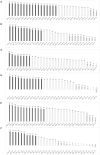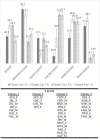Medical Students' and Trainees' Country-By-Gender Profiles: Hofstede's Cultural Dimensions Across Sixteen Diverse Countries
- PMID: 35211478
- PMCID: PMC8862177
- DOI: 10.3389/fmed.2021.746288
Medical Students' and Trainees' Country-By-Gender Profiles: Hofstede's Cultural Dimensions Across Sixteen Diverse Countries
Abstract
Purpose: The global mobility of medical student and trainee populations has drawn researchers' attention to consider internationalization in medical education. Recently, researchers have focused on cultural diversity, predominately drawing on Hofstede's cross-cultural analysis of cultural dimensions from general population data to explain their findings. However, to date no research has been specifically undertaken to examine cultural dimensions within a medical student or trainee population. This is problematic as within-country differences between gender and professional groups have been identified within these dimensions. We address this gap by drawing on the theoretical concept of national context effects: specifically Hofstede's six-dimensional perspective. In doing so we examine medical students' and trainees' country profiles across dimensions, country-by-gender clustering, and differences between our data and Hofstede's general population data.
Methods: We undertook a cross-cultural online questionnaire study (eight languages) containing Hofstede's 2013 Values Survey. Our questionnaire was live between 1st March to 19th Aug 2018, and December 2018 to mitigate country holiday periods. We recruited undergraduate medical students and trainees with at least 6-months' clinical training using school-specific methods including emails, announcements, and snowballing.
Results: We received 2,529 responses. Sixteen countries were retained for analyses (n = 2,307, 91%): Australia, Chile, China, Hong Kong, India, Indonesia, Ireland, Israel, Japan, Malaysia, New Zealand, Pakistan, South Africa, South Korea, Sri-Lanka, Taiwan. Power distance and masculinity are homogenous across countries. Uncertainty avoidance shows the greatest diversity. We identified four country clusters. Masculinity and uncertainty are uncorrelated with Hofstede's general population data.
Conclusions: Our medical student and trainee data provides medical education researchers with more appropriate cultural dimension profiles than those from general population data. Country cluster profiles stimulate useful hypotheses for further research, especially as patterning between clusters cuts across traditional Eastern-Western divides with national culture being stronger than gendered influences. The Uncertainty dimension with its complex pattern across clusters is a particularly fruitful avenue for further investigation.
Keywords: culture; gender; internationalization; medical students; medical trainees; uncertainty.
Copyright © 2022 Monrouxe, Chandratilake, Chen, Chhabra, Zheng, Costa, Lee, Karnieli-Miller, Nishigori, Ogden, Pawlikowska, Riquelme, Sethi, Soemantri, Wearn, Wolvaardt, Yusoff and Yau.
Conflict of interest statement
The authors declare that the research was conducted in the absence of any commercial or financial relationships that could be construed as a potential conflict of interest. The reviewer JB declared a shared affiliation with one of the authors, LVM, to the handling editor at time of review.
Figures



References
-
- OECD . Indicator B6 What is the profile of internationally mobile students? In: OECD. Education at a Glance 2018, OECD Indicators. Paris: OECD Publishing; (2018).
-
- Babones S. The China student boom and the risks it poses to Australian universities. In: Studies TCfI Vol Analysis Paper 5 (AP5) (2019). Available online at: https://wwwcisorgau/publications/analysis-papers/the-china-student-boom-...
-
- Qureshi AZ, Rathore FA. Number of Pakistani physicians working abroad; do we really need to know. J Pak Med Assoc. (2014) 64:1410–2. - PubMed
-
- Joel S. Globalization of Education: An Introduction. New York: Taylor and Francis. (2008).
LinkOut - more resources
Full Text Sources
Miscellaneous

